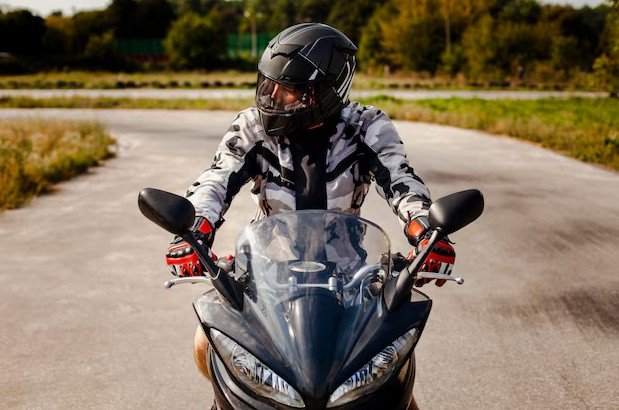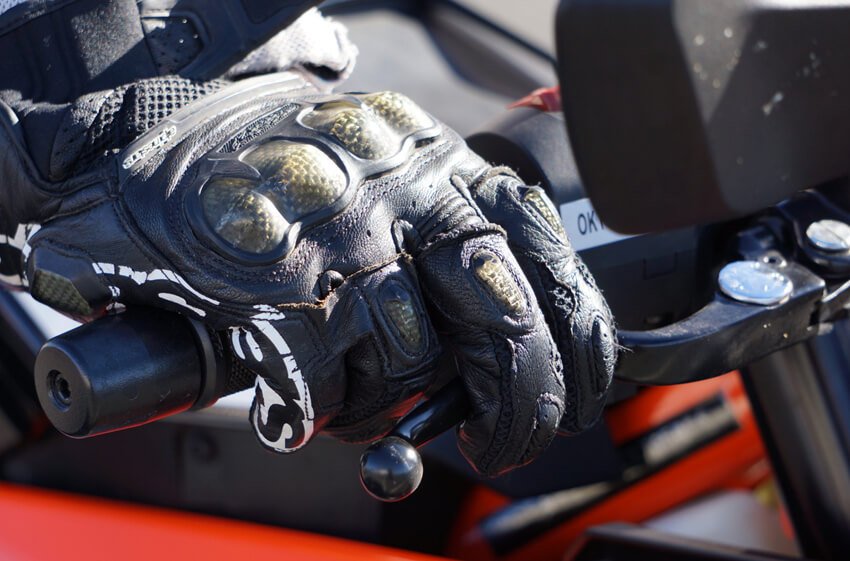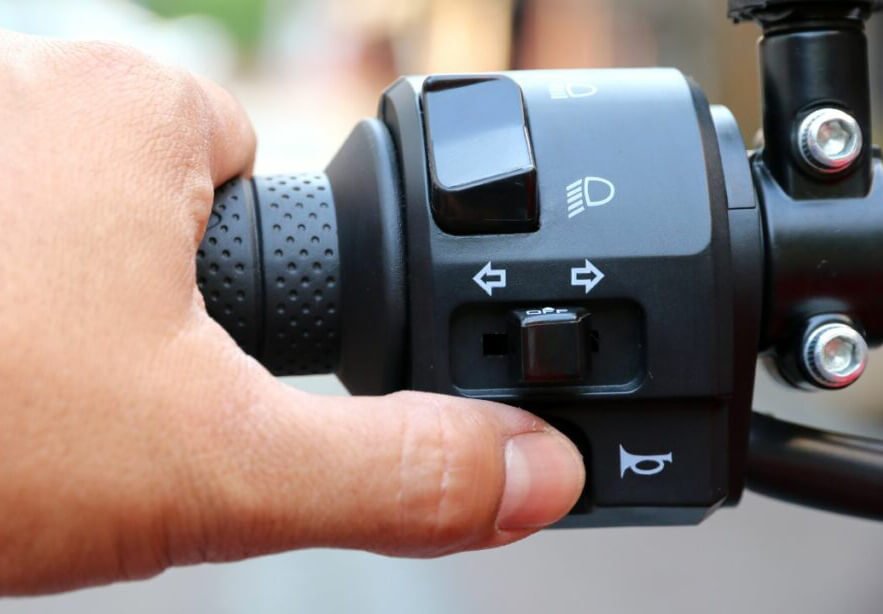Riding a motorcycle in heavy traffic, such as in an urban area, is convenient, but it is also challenging. Many people choose motorcycles as a means of commuting to work.
What will you do while navigating through heavy traffic?
It requires a blend of heightened awareness, strategic positioning, and proactive decision-making.
Whether you're commuting in Boston's bustling streets or maneuvering through city congestion, it is the same. Mastering these skills can significantly enhance your safety and riding experience.
Keep reading, we will share with you some easy yet useful tips and skills for riding in heavy traffic roads. These will definitely help improve your riding safety.
👀 Watch Drivers' Head Movements and Mirrors Adjustment
Understanding a driver's intentions is crucial. Here I mean, both the drivers/riders in front of you, on your left and right.
Pay attention to observing their head movements and mirror adjustments. These movements can provide early clues about their next move.
If a driver/rider is looking over their shoulder or adjusting their mirrors, they may be preparing to change lanes or merge.
Anticipate these actions and position yourself accordingly. This will help you maintain a safe distance and avoid potential hazards.
🔄 Combining Mirror Checks with Head Checks

combine mirror check and head check while riding
All motorcycle riders believe that mirrors are essential for situational awareness, including me. But remember, they also have limitations.
Always have a head check before changing lanes or making turns in the heavy traffic areas.
This is an essential skill to make sure there are no vehicles in your blind spots.
Do not just rely on your mirrors, because this can lead to missed information.
So, combining mirror checks with head checks is vital for comprehensive awareness.
🚫 Never Position Yourself Between a Vehicle and An Offramp
Drivers may suddenly decelerate or change lanes to exit. Sometimes you may have a limited time, or even have no time to react.
So, trust me, it is risky to place yourself between a vehicle and an off-ramp.
To avoid this, keep a safe distance and avoid lingering in such positions.
If you find yourself in this situation, be prepared to accelerate or maneuver safely. This can help avoid potential collisions.
🖐️ Prepare for Brakes

keep your fingers over the brake levers while riding a motorcycle in heavy traffic
In the heavy traffic area, you will need to brake your motorcycle frequently.
So, keep your fingers over the brake levers and your feet near the foot controls. Then you will have quicker response times in emergencies.
This is a proactive approach that all riders should master. Because it ensures you're ready to decelerate or stop when necessary.
This skill is especially useful in unpredictable traffic conditions.
🌟 Be Visiable
Visibility is important, especially for riding a motorcycle in heavy traffic.
Wear bright, reflective gear and ensure your motorcycle's lights are functioning correctly.
You can also install a headlamp modulator on your motorcycle. It can make your bike more noticeable to other drivers, especially in daylight.
Avoid riding in a vehicle's blind spots and always position yourself where you're clearly visible to other road users.
⚡ Be Ready to Accelerate Quickly
In heavy traffic, having the ability to accelerate quickly can be a lifesaver.
You can ride in a lower gear than usual. This will keep your engine responsive, allowing for swift acceleration when needed.
This technique is particularly useful when navigating through gaps or avoiding sudden obstacles.
🚦 Stay Left or Right When Traffic Slows
When traffic begins to slow, position yourself in the left or right portion of your lane.
This positioning provides better visibility for both you and other drivers on the road. Moreover, you will get more room to maneuver, reducing the risk of being rear-ended.
Most importantly, it also allows you to see potential escape routes and react promptly to changes in traffic flow.
🔍 Practice the Scan
Adopt the "SEE" strategy: Search, Evaluate, Execute.
Keep watching your surroundings while riding through a heavy traffic area. Pay attention to potential hazards, assess the risks, and execute appropriate maneuvers to avoid them.
This proactive approach enhances your ability to respond effectively to changing traffic conditions.
⚠️ Left-Turn Treachery
Intersections usually have significant risks. This is especially true when drivers make left turns without yielding.
Be cautious when you are approaching the intersections. And, pay attention to anticipate potential left-turning vehicles. Moreover, position yourself to have an escape route if necessary.
Being aware of these risks while riding! They will remind you to take preventive measures and reduce the possibility of accidents.
🛣️ Study the Road Conditions
Road conditions can vary, and certain surfaces may be hazardous for motorcycles.
Be vigilant for potholes, gravel, wet patches, or uneven surfaces.
Adjust your speed and positioning to navigate these areas safely. And, avoid sudden maneuvers that could lead to loss of control.
🛡️ Ride in Open Areas
Always aim to position yourself in areas with the most space and visibility.
Avoid riding in between vehicles or in congested zones where escape routes are limited.
By riding in open areas, you increase your ability to maneuver and reduce the risk of collisions.
📯 Use Your Horn

use your motorcycle horn when necessary -riding in heavy traffic
Use your thumb to activate your horn when necessary.
A well-timed horn use can alert other drivers to your presence. This is especially useful in situations where they may not have seen you.
However, use the horn judiciously to avoid startling other road users.
🧍 Be Thin
Maintain a narrow profile by keeping your arms and legs close to your body.
This reduces the risk of contact with other vehicles and avoids accidents. Besides, it allows you to navigate through tight spaces more easily.
A compact riding posture enhances your control and stability, especially in heavy traffic.
🚪 Have an Escape Plan
Always have an escape plan. Pay attention to identify potential exit routes while in the heavy traffic road.
For example, you can use the gaps between vehicles or open spaces to avoid hazards.
Being aware of these options allows you to react swiftly and safely in an emergency.
🛡️ Keep Your Position
When riding in heavy traffic, position yourself in a way. Make it difficult for other drivers to encroach upon your space.
By maintaining a clear and assertive position, you can deter other vehicles from cutting into your lane or crowding you. This will also enhance your safety and confidence on the road.
🏁 Conclusion
Riding a motorcycle in heavy traffic requires skills, awareness, and proactive decision-making. By using these tips and techniques, you can navigate urban roads more safely and confidently. Remember, the key to safe riding is preparation, vigilance, and adaptability.


